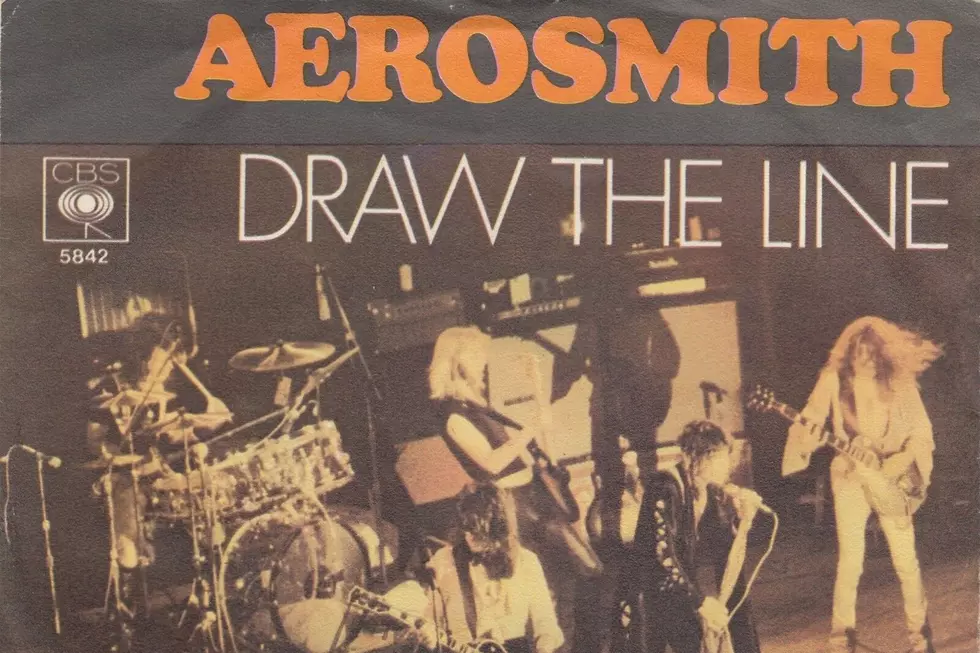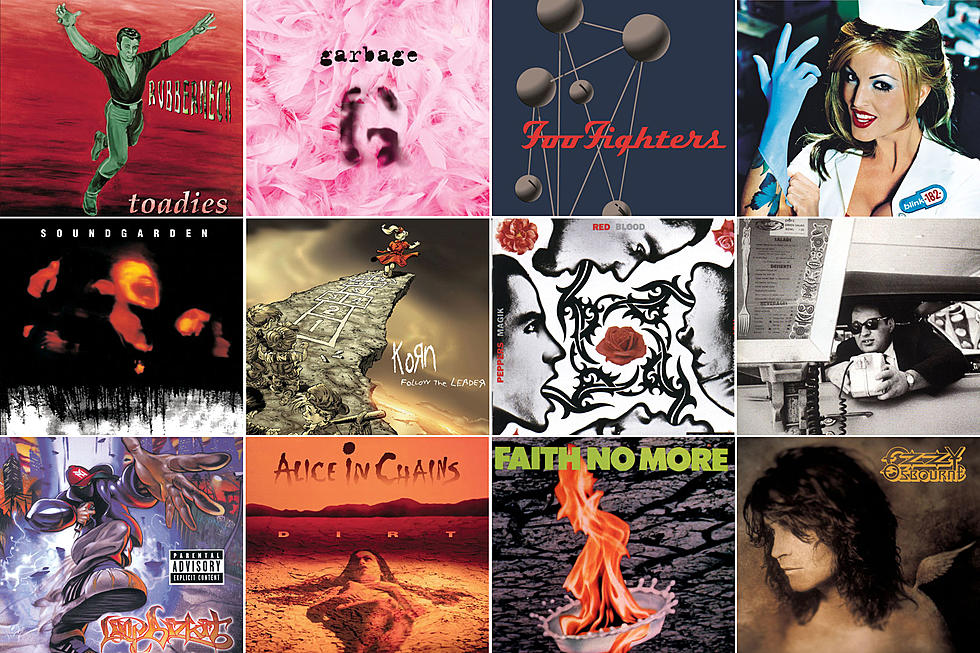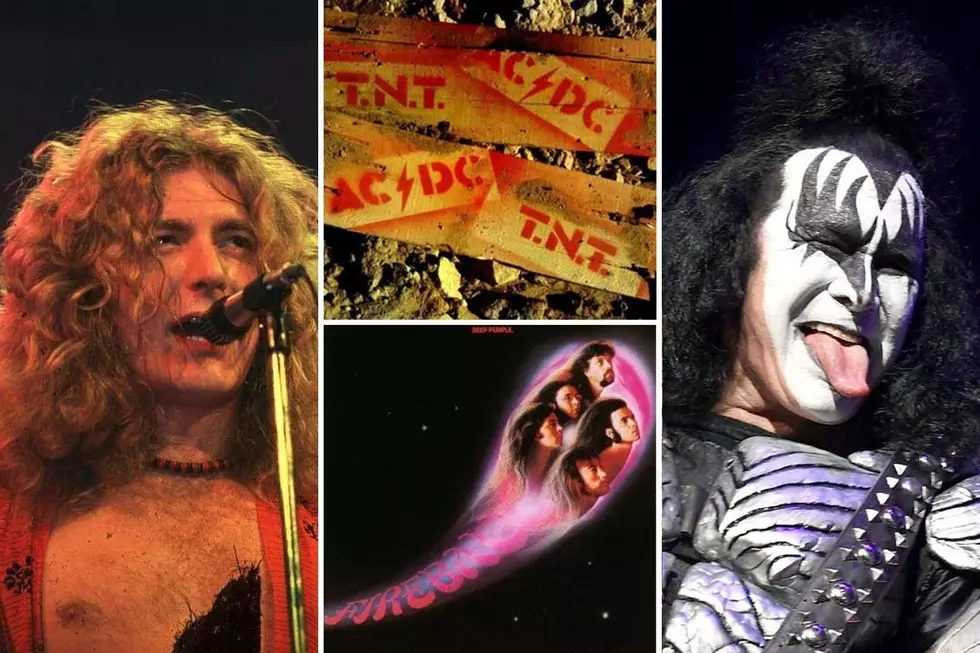
When Aerosmith Fired a Powerful Parting Shot With ‘Draw the Line’
Aerosmith ruled the hard-rock mountain at the start of 1977, hot off the back-to-back smashes of 1975's Toys in the Attic and 1976's Rocks. Burnt out by relentless touring, they desperately needed some time to recharge.
Unfortunately for Aerosmith, the cocktail of fame, fortune and excess proved far too potent to put down, and Columbia Records ushered their cash cow back into the studio immediately to begin working on a follow-up, 1977's ill-fated Draw the Line.
The Boston quintet shacked up in June 1977 at an abandoned convent called the Cenacle just outside New York City to commence work on their fifth album. Producer Jack Douglas carted in a studio's worth of state-of-the-art recording equipment so Aerosmith could write and record on the property.
It would have been the perfect plan — if only Aerosmith had the desire or ability to make music.
"The truth is that we were all together yet totally apart," guitarist Joe Perry lamented in his 2014 memoir Rocks. "We were separated from one another, physically and emotionally. We were scattered. Our rooms were in distant sections of the estate. Overall, the vibe was mellow. When it came to writing, though, it felt like we were trying to squeeze toothpaste out of an empty tube.
"Everyone was exhausted from constant touring and recording," he added. "I was in a marriage I wanted out of. Adding to the madness of the moment was the fact that we were being fueled by a medicine chest of high-quality drugs. With Manhattan only 45 miles away, there was a continuous flow of dealer friends from the city."
Listen to Aerosmith's 'Draw the Line'
Perry later put it more succinctly: "A year or two ago, we had been musicians fooling around with drugs. Now we were druggies fooling around with music."
For the next several months, Aerosmith lived a mostly aimless existence at the Cenacle, indulging in their vices, playing ruthless pranks on one another and occasionally finding time to eke out some music. Perry had brought a cookie tin of demos including the punky "Bright Light Fright" (on which he sang lead vocals) and the sleazy blues rockers "I Wanna Know Why," "Get It Up" and the instant-classic "Draw the Line."
The title track shows Aerosmith at their whip-cracking, hell-raising finest, opening with Joey Kramer's furious drum fills, swampy guitar-and-bass riffs and Perry's raucous slide guitar. Steven Tyler sums up the band's dire state of affairs with his raggedy shrieks. The song was completed with lyrics alluding to rampant drug abuse ("Pass me the vial and cross your fingers, it don't take time") and sexual deviance ("Indian summer, Carrie was all over the floor / She was a wet-nap winner and rarely ever left the store").
"Well, a wet nap is something that you wipe babies' asses with," Tyler explained to Rolling Stone in 2012. "Back in the day, if you were lucky enough to grab a stewardess on a plane and you came out of the bathroom, all you had to clean up with was a wet nap. The best lyrics are like the scrambled eggs you have in your head about a situation – and I've got this uncanny way of weaving shit together."
Watch Aerosmith Perform 'Draw the Line' Live
Still, the song and album name spoke to the band's piss-poor condition in late 1977. "Draw the Line is a classic title that says it all," Douglas later admitted. "The coke lines, heroin lines, drawing symbolic lines and crossing them all – no matter what."
The debauchery inevitably took its toll when Aerosmith released "Draw the Line" as the album's lead single in October 1977. It peaked at No. 42 on the Billboard Hot 100, a far cry from the recent top 10 successes of "Walk This Way" and "Dream On." "It didn't make the Top 40," Tyler marveled, "and this was supposed to be a huge album for us, a big follow-up to our best work."
Despite its front-loaded start, Draw the Line underperformed as well, selling more than a million copies in its first six weeks but stalling at No. 11 on the Billboard 200, a major downgrade from the No. 3 peak that Rocks had enjoyed. It marked the beginning of a perilous downward spiral that took nearly a decade to correct.
Even as Aerosmith raced headfirst toward rock bottom, however, they somehow managed to fire off a scorching parting shot with "Draw the Line."
Aerosmith Albums Ranked
Was Aerosmith’s ‘Night in the Ruts’ Doomed to Fail?
More From WPDH-WPDA










